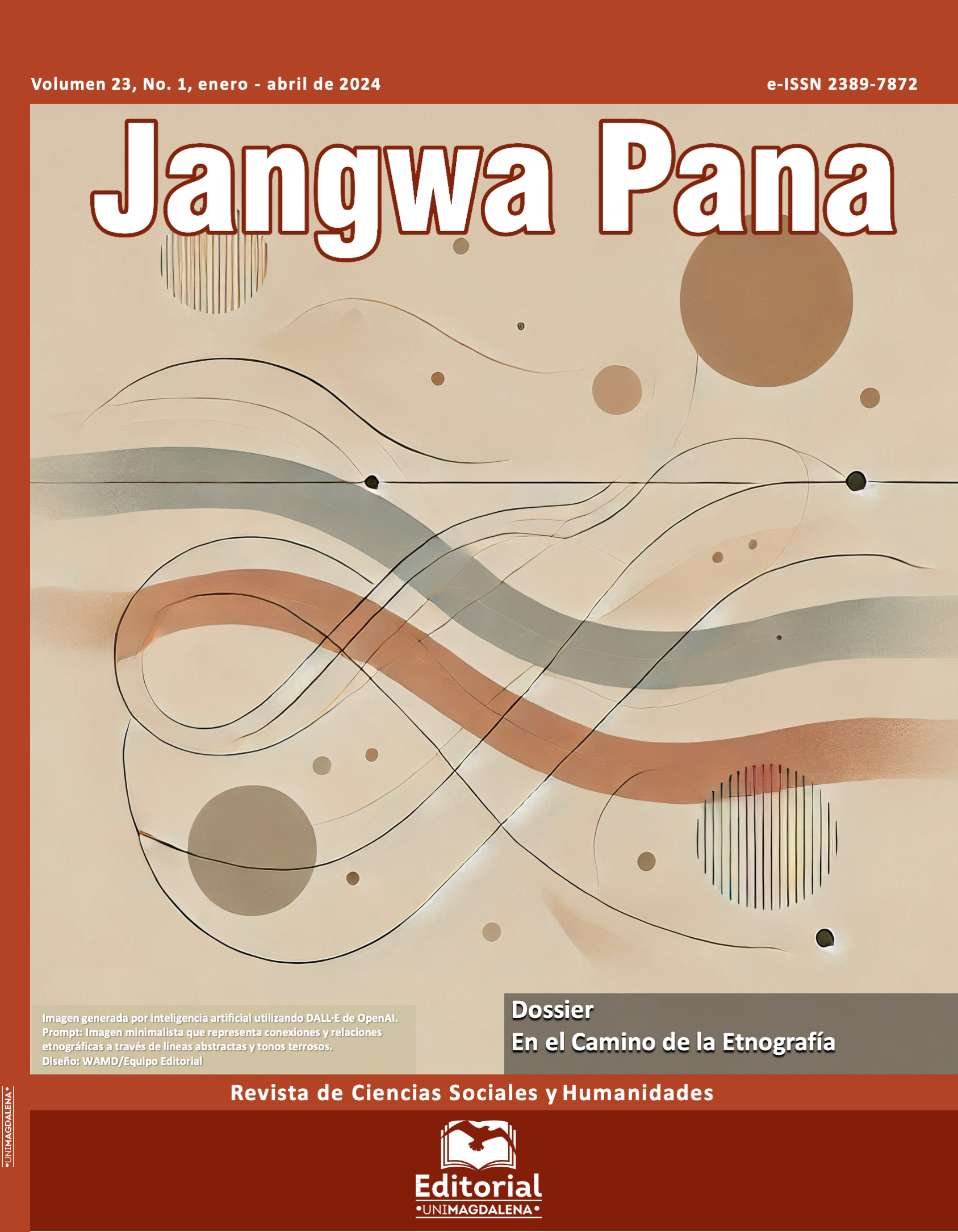From The Pacific To The Amazon: The Migration Of The Afro-Colombian Communities To The Amazon Piedemonte
Main Article Content
Abstract
Downloads
Article Details
References
Arocha, J., & Friedeman, N. (1986). De sol a sol. Génesis, transformación y presencia de los negros en Colombia. Planeta.
Echeverri, M. (2016). Otredad racializada en la migración forzada de afrocolombianos a Antofagasta (Chile). Nómadas, (45), 91-103. http://www.scielo.org.co/scielo.php?script=sci_arttext&pid=S0121-75502016000200007
Gobernación de Nariño. (2020). Plan de Desarrollo Departamental Mi Nariño, en Defensa de lo Nuestro 2020-2023. https://sitio.narino.gov.co/wp-content/uploads/2020/11/Plan_de_Desarrollo_Mi_Narino_en_Defensa_de_lo_Nuestro_2020-2023.pdf
Hamelin, P. (2002). Frontière, migration et environnement en Amazonie. Revue Européenne des Migrations Internationale, 18(2), 67-82. https://journals.openedition.org/remi/1639#tocto1n4
Hoffmann, O. (2007). Comunidades negras en el pacífico colombiano. IFEA; IRD; Abya; Yale; CEMCA; CIESAS.
Losonczy, A. (1993). De lo vegetal a lo humano: un modelo cognitivo afro-colombiano del Pacífico. Revista Colombiana de Antropología, 30, 37-57. https://revistas.icanh.gov.co/index.php/rca/article/view/1708/1279
Losonczy, A. (1997). Les saints et la forêt. L’Harmattan.
Losonczy, A. (2004). Sentirse negro: Empreintes du passé et mémoire collective au Chocó. Annales: Histoire, Sciences Sociales, 53(3), 589-611.
Ramírez, S. (2018). Si la champa se hunde, yo no me ahogo. El pueblo Afrocolombiano: de la desterritorialización a los territorios Afrourbanos. REMHU: Revista Interdisciplinar da Mobilidade Humana, 26(52), 131-147. https://www.redalyc.org/journal/4070/407055545008/
Rubiano, J. (2016). La reapropiación del guaico: migración y legitimación del territorio por la comunidad pasto del resguardo Rumiyaco (Nariño-Colombia). Boletín de Antropología, 31(52), 45-66. https://revistas.udea.edu.co/index.php/boletin/article/view/326866/20784127
Zuluaga, J. (2015) Afrodescendientes, representaciones y movilidad social en Tuluá. Revista CS, (16), 207-232. https://www.icesi.edu.co/revistas/index.php/revista_cs/article/view/2040/2635

